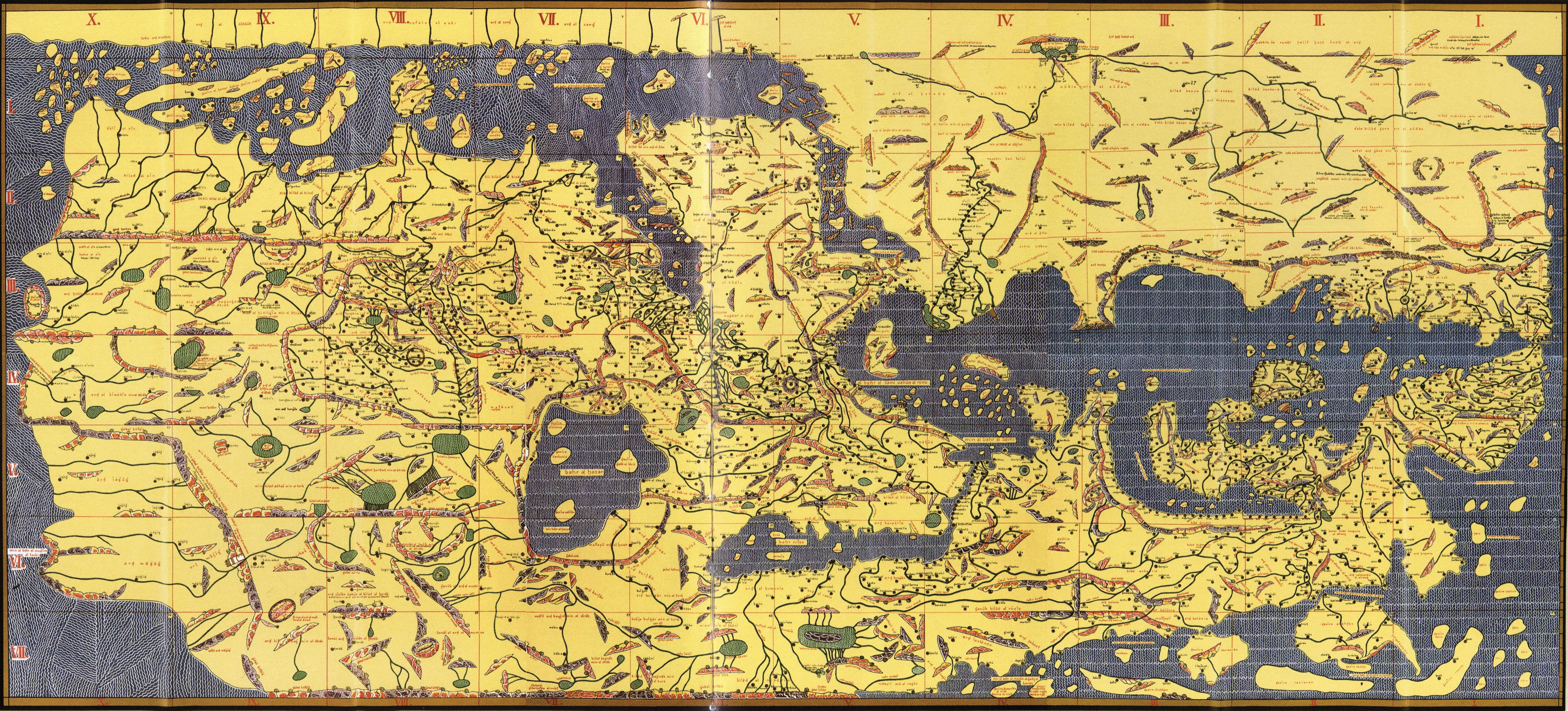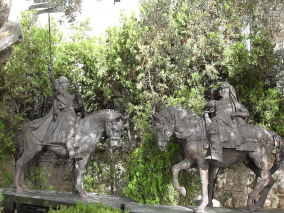With desert Stormer Tariq Ali and Thorvald Steen have revived the hope of cross-border cooperation. Unfortunately, today's Norwegian 10-year-olds are trained to have a completely different perspective.
(THIS ARTICLE IS MACHINE TRANSLATED by Google from Norwegian)
CURRENT BOOKS
1. TARIQ ALI AND THORVALD STEEN Desert Storms, Actors Publishers October, 2010 2. STEFFEN SØRUM The Crusaders 1-5 Aschehoug 2008-2009 Book Review. Let it be said right away: Ali and Steen have made a small masterpiece of a drama.
In the play "Desert Storms," which had premiere 5. March and which came out in book form the same day, they have embraced an 800 year-old historical event: They have breathed life into the relationship between the English Crusader King Richard the Lionheart (1157-1199) and the Kurdish-born hungry legend Saladin (1138-1193).
Physically, the two army commanders fought for power over Jerusalem. But it was also a spiritual battle, about who secured the best aftermath. And there is only one victory lord left: Saladin from Tikrit, in today's Iraq. Even in the darkest European Middle Ages, the Muslim warlord is revered for his forgiveness, as in Dante's The comedy. Saladin recaptured Jerusalem in 1187 without taking revenge on the religious fanatical crusaders. Rather, he left them in peace, so that the city again became a multi-religious capital, as it had been before the occupation of the Rome Pope's blessing in 1099.
One thing is they are purely literary qualities that desert Stormer (October Publisher) holds. Here are basic existentialist considerations for our time, magnificent humor, literary gems and a dramaturgical grasp that drives. Anything less than masterful can not be expected anyway. After all, there are two of the foremost narrators of our time who have been collaborating on the project for two years now:
The Lahore-born and London-born author Tariq Ali (67) has been central in recent decades
 in the intellectual world arena. Among the books translated into Norwegian are The Battle of Fundamentalism: Crusade, Holy War and the Modern, written in 2003. It is difficult to imagine a better Norwegian sparring partner than Thorvald Steen (56), the socially engaged author who, in the same invasive year that Ali published fundamentalism-book, published Stories about Istanbul. It was then also Steen who during the Wergeland days in 2008 proposed to create their own Saladin days. As I said so done.
in the intellectual world arena. Among the books translated into Norwegian are The Battle of Fundamentalism: Crusade, Holy War and the Modern, written in 2003. It is difficult to imagine a better Norwegian sparring partner than Thorvald Steen (56), the socially engaged author who, in the same invasive year that Ali published fundamentalism-book, published Stories about Istanbul. It was then also Steen who during the Wergeland days in 2008 proposed to create their own Saladin days. As I said so done.
Fighting with Jews
However, there is something more important than purely literary qualities that will be emphasized here: The most important thing for our time, in a society that sometimes seems to be on the verge of interpersonal collapse, is the Steen-Ali Saladin project as such. The fact that they come together in this way, across all artificial boundaries, and by their mere act shows that another, collaborative world is possible. It is such actions that constitute the cure for the Ebola-contagious myth of "civilization conflicts" that are haunting our time today (Steen-Ali has probably not as diverse a background as many believe, Ali was raised as good Pakistani in atheism by his parents).
A short-term disadvantage with desert Stormer is that Aftenposten and others can again present it as if Saladin "stood out" in his day, that he was "the champion of the time for coexistence between religions and cultures". Thus, the notion of one exception in a sea of war and conflict is cultivated again. And so, the conflict rule can once again consolidate.
But the last 1400 years has been characterized by more peace and cooperation between Muslims and Christians than the opposite. Or as Saladin says desert Stormer, to explain the Jerusalem residents' multicultural resistance to the Crusaders: "Christians and Jews are fighting side by side with us to protect their lives and and their homes. We fight in the name of Allah, God and Jehovah. "
Muslims did not constitute a majority in Jerusalem at the time. The newly converted Northern European Christians therefore also attacked Palestine Orthodox Christians, who for 1300 years have left the Muslim Nuseibeh family with the keys to the Holy Grail Church at Calvary.
The Crusaders went to the Baltic to repent Gentiles, or slaughtered Jews on their way. The Pope's Church in Rome also came into conflict with the more powerful Eastern Church in Constantinople after the theological break in 1054, shortly before the Crusade call. In 1204 Constantinople was burned down by the Crusaders. For no reason, the Greek Orthodox Patriarch preferred to stay in Istanbul under the Turks rather than come under the Pope in Rome.
Roger in Sicily
Saladin did not represent Saladin's foremost example of coexistence "between religions" at the time. Then it is more natural to bring out the Norman king of Sicily Roger II (1095-1154), who in 1136 invited the African-Arab cartographer Muhammad al Idrisi (1100-1165) to his court. For 18 years, al-Idrisi worked in Palermo and created the foremost world map one until then had  set. The collaboration between Roger and al-Idrisi is similar to what Steen and Ali have created in a twig room at the Literature House: Steen is the inviting Roger, Ali the world intellectual al-Idrisi who receives the invitation.
set. The collaboration between Roger and al-Idrisi is similar to what Steen and Ali have created in a twig room at the Literature House: Steen is the inviting Roger, Ali the world intellectual al-Idrisi who receives the invitation.
sadly there are many forces that break down the work of writers like Steen and Ali. Another past depiction is ironically published by the owners desert Stormerpublishers October publishers, namely by Aschehoug. This major publisher has released the bestseller in the popular Lesehest series The Crusaders in five volumes, completed autumn 2009, written by Steffen Sørum. The books are intended for 10-12 year olds. According to the publisher, the books "show both the Christian and the Muslim side of the conflict and provide an educational insight into history and culture from an important era."
In practice, words and images are cultivated rather than today's simplified past images. The book introduces new generations of Norwegian children that Jerusalem is "the Holy City, which was conquered by the Muslims" (Book 1). While in the "Middle East, there is a bitter struggle between Christians and Muslims" (Book 4, "The Saladin's Trap"). Heard it before?
Threatening Arabs
In the Aschehougs The Crusaders the children are presented for beheading. And the drawings mostly show threatening "Arabs". 
One thing is whether it is advisable to create action books for 10-year-olds about the most complex and value-laden period in European history. It becomes more problematic when the time period is presented in a way that confirms today's enemy images, in contrast to the complex reality. In good fear-creating style, "action" is depicted where "the Arabs are ready for battle… there are flashes of swords longing to cut down the enemies" (book 5).
The message in desert Stormer is thus contradicted by the even more read Crusader series, which will largely characterize the worldview of the growing family. In practice, we take one step forward and two back. But if nothing else, it can become a tango, as Steen-Ali adds.
Now they will take the Saladin days further into the world. That's nice. But their next project should be to tell stories like the one about "Roger and Idrisi". The world doesn't just need to know that it is possible to be a forgiving warrior. You need to show that it is possible, even when the world around you claims that crusades and holy wars are going on, to invite you to a long-standing research collaboration so as to create world culture for posterity.
Sometimes it doesn't hurt that the story repeats itself. On the contrary. Rather, it is the return of history we can hope for after seeing the fruits of Steen's and Ali's collaboration.
Reviewed by Dag Herbjørnsrud, etc. ed. Acting.


